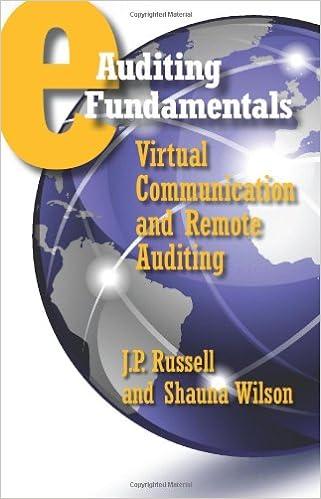




Question 5 1 pts Three ways of lowering a break-even point, holding other factors constant, are: decrease total fixed costs, increase selling prices, and/or increase unit variable costs. O increase total fixed costs, decrease selling prices, and/or increase unit variable costs. O decrease total fixed costs, increase selling prices, and/or decrease unit variable costs. decrease total fixed costs, decrease selling prices, and/or decrease unit variable costs. Question 6 1 pts Define operating leverage and explain why a highly leveraged company may be risky. Operating leverage is a firm's ratio of fixed to variable costs. A highly leveraged company has relatively high fixed costs and low variable costs. Such a firm is risky because small changes in volume lead to large changes in net income. Operating leverage is the ratio of relative proportions or combinations of quantities of products that constitute total sales. A highly leveraged company is risky since the more products produced cause costs to go up and total sales to decrease. Therefore, net income decreases as operating leverage ratios increase. Operating leverage is the combination of variable and fixed cost resources used to carry out the firm's activities. A highly leveraged company can create an unstable work environment due to low net income making it risky to stay in business. Operating leverage is the sum of a firm's fixed and variable costs. A highly leveraged company is risky because the higher the costs are, the harder it can become for the firm to make a profit, making costs the main determination when accepting orders. Question 7 1 pts Suppose a company with high operating leverage is also operating at near capacity for all its fixed-cost resources. How could an increase in sales volume result in decreasing economies of scale for this company? An increase in demand for a company's products will drive almost all other cost-driver levels higher. This will cause cost drivers to exceed capacity or the upper end of the relevant range for its fixed-cost resources. The fixed costs will then be spread out over the increased demand, and thus cost per cost-driver unit may decrease. An increase in demand for a company's products will drive almost all other cost-driver levels higher. This will cause cost drivers to exceed capacity or the upper end of the relevant range for its fixed-cost resources. Since fixed-cost resources must be purchased in "chunks" of capacity, the proportional increase in cost may exceed the proportional increase in the use of the related cost-driver. Thus cost per cost-driver unit may increase. An increase in demand for a company's products will drive a small number of cost-driver levels higher. This will cause cost drivers to slight rise, but not exceed capacity or the upper end of the relevant range for its fixed-cost resources. Thus cost per cost-driver unit will remain the same. An increase in demand for a company's products will not drive cost-driver levels higher. This will cause cost drivers to stay near capacity without exceeding capacity. Since fixed-cost resources must be purchased in "chunks" of capacity and the capacity level has not changed, the cost per cost-driver unit will remain the same. Question 8 1 pts "The contribution margin and gross margin are always equal." Do you agree? Explain. O No. The contribution margin is the sales price less all variable expenses; whereas the gross margin is the contribution margin less fixed expenses. O Yes. The end result for the contribution margin and gross margin are always equal as they take into account the same expenses, just in a different order. No. The contribution margin is the sales price less all variable expenses; whereas the gross margin is the sales price less the cost of goods sold. Depending on the costs incurred and type of business, these amounts could be different No. The contribution margin is the sales price less the cost of goods sold; whereas the gross margin is the sales price less all variable expenses. Depending on the costs incurred and type of business, these amounts could be different. Question 1 1 pts "With variable costing, only direct materials and direct labor are inventoried." Do you agree? Why? No. Variable costing means that all costs of manufacturing are inventoried. These include fixed manufacturing overhead costs which are incurred as a product cost that is added to inventory and charged against sales as cost of goods sold when the company sells the inventory. O Yes. Variable costing means that all variable costs of manufacturing are inventoried. Variable costs are limited to direct costs and direct labor. All overhead costs are excluded, as these costs cannot be directly traced to products and services. Yes. Variable costing means that only direct materials and direct labor are inventoried. The inclusion of overhead in costs that are inventoried is not allowed for either external-reporting or tax purposes and are therefore excluded. No. Variable costing means that all variable costs of manufacturing are inventoried. These include overhead costs that are incurred in direct proportion to the volume of production, even though these costs may only indirectly affect the production process and thus are categorized as "overhead











